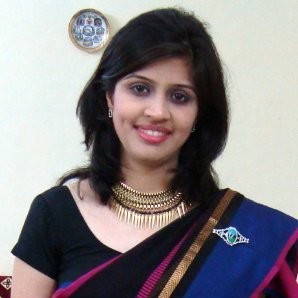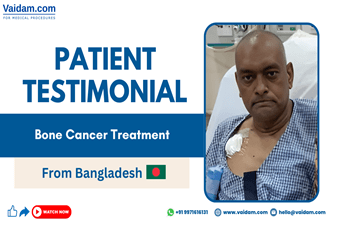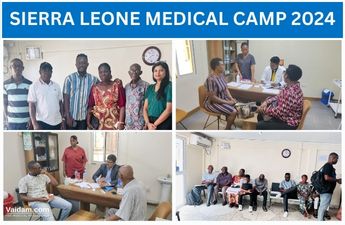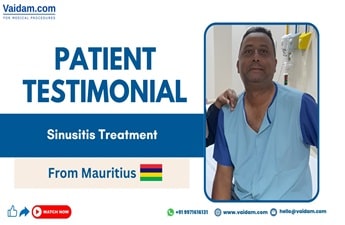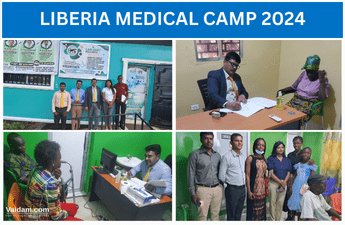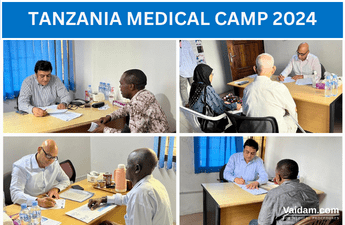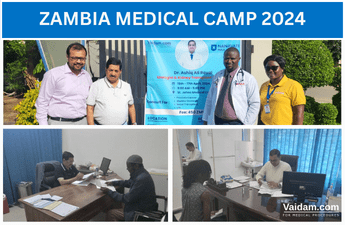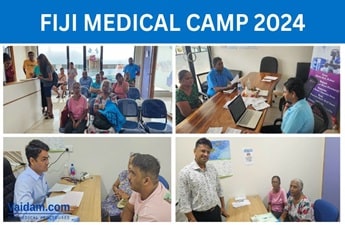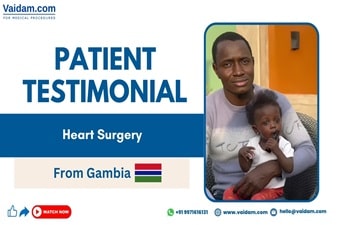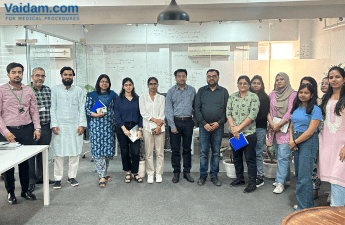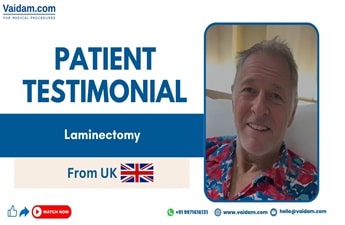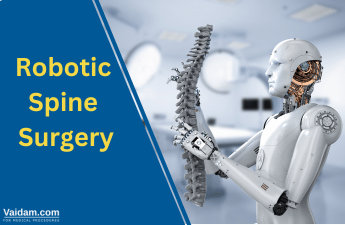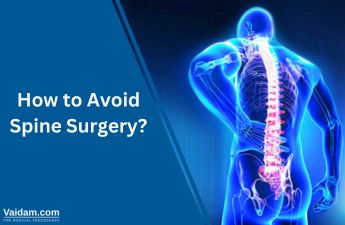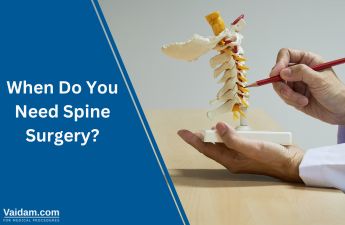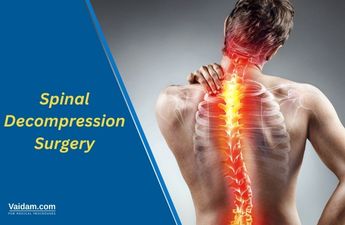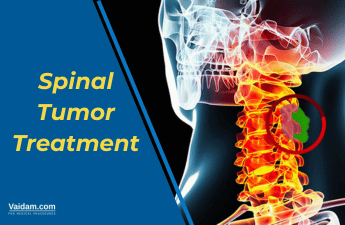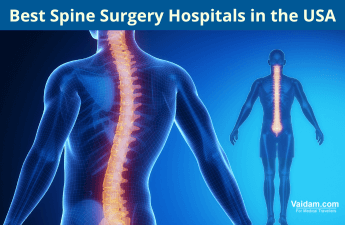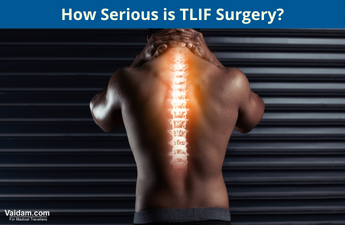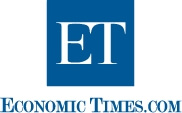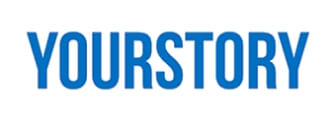
Are you suffering from neck pain, radiating arm pain, shoulder pain, or tingling/numbness in the arm? These could be signs of a herniated disc in the cervical spine. Cervical herniated discs can be managed in several ways, including medicines, physical therapies, and surgery.
One surgical approach to managing herniated cervical discs is anterior cervical discectomy and fusion (ACDF). Since it is a form of decompression, it can also be called anterior cervical decompression.
The cost of anterior cervical discectomy and fusion in India starts from INR 2,40,000. This includes preoperative diagnostic tests, surgery costs, surgeon's fees, and hospital stays.
This blog will help you gain insights about the surgery, its procedure, and its associated risks.
Get in Touch with Medical Experts
What is Anterior Cervical Discectomy and Fusion?
A type of neck surgery, anterior cervical discectomy and fusion, involves removing the damaged and herniated disc in the cervical region. The surgery helps relieve the nerve pressure and ease the pain, numbness, weakness, and tingling associated with herniated discs.
The surgery is divided into two parts:
- Anterior Cervical Discectomy: The surgery is done using an anterior approach. The spine in the neck region (cervical spine) is reached from the front by making an incision in the throat area. The bulging disc is then removed without disturbing the spinal cord and the spinal nerves.
- Fusion: The fusion surgery is done along with the discectomy to stabilize the particular spinal segment. The surgery involves placing a bone graft or implant to strengthen the area from where the disc was removed.
Who is the Right Candidate for Anterior Cervical Discectomy and Fusion?
Anterior cervical discectomy and fusion surgery help treat herniated discs (bulging discs), degenerative discs (damaged discs due to drying and shrinkage with age), and cervical stenosis (narrowing of the canal from where the spinal cord passes).
A suitable candidate for the ACDF is someone who has:
- Herniated or degenerated discs
- Significant pain in the arm or hand
- Symptoms that are not improving with medicines and physical therapy
- Weakness and instability in the neck
- Arm pain, which is more severe than neck pain
What are the Preparations Done before Anterior Cervical Discectomy and Fusion?
- Anterior cervical discectomy and fusion is a neurosurgery that skilled neurosurgeons must perform. Countries like India, Thailand, UAE, and Germany have some of the best neurosurgeons experienced in all types of spinal surgeries.
- On consulting the neurosurgeon, they will evaluate you using various diagnostic tests such as X-rays and MRIs. With the help of these results, the surgeon will decide if you should undergo the ACDF surgery or not.
- Once you are selected for the surgery, a proper medical history is taken, including allergies, bleeding history, anesthesia reactions, and previous surgeries (if any).
- You must discuss all the medications, including prescription, OTC, and herbal supplements you are taking with the surgeon. Certain drugs like NSAIDs and blood thinners must be stopped seven days before the surgery.
- Presurgical tests like blood tests, ECG, and chest X-ray may be done before the surgery.
- Smoking and alcohol consumption hampers healing, and you must also stop these.
What is the Procedure of Anterior Cervical Discectomy and Fusion?
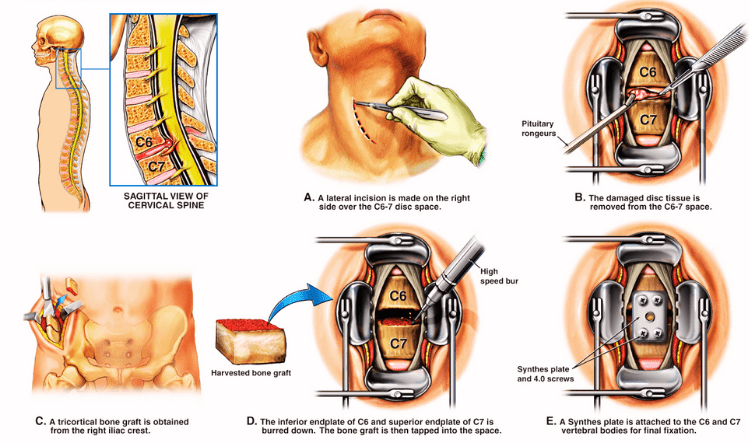
Anterior cervical discectomy and fusion is a 2 to 3-hour procedure, but it can take longer depending on the case's complexity.
There are several steps involved in the surgery.
- Preparing the patient: The patient lies on the operating table and is given general anesthesia. The neck area is cleaned and prepped.
- Making an incision: The surgeon makes a 2-inch incision on the neck to access the herniated disc. The trachea, esophagus, and arteries are retracted to create a tunnel to the spine.
- Locating the damaged disc: Using a special X-ray (fluoroscope), the surgeon passes a needle into the disc and locates the damaged disc and vertebrae. The bones above and below the affected disc are retracted for surgery.
- Removing the disc: More than 50% of the disc is removed using small grasping tools. After this, the surgeon uses a surgical microscope to remove the disc. The ligaments behind the vertebrae are also drawn to reach the spinal canal and remove any disc material pressing the spinal nerves.
- Decompressing the nerves: The next step involves removing the bone spurs that press on the nerve roots. A foraminotomy gives the nerves a larger area to exit the spinal canal.
- Fusion/arthroplasty surgery: After removing the bulging disc and relieving the nerve pressure, fusion surgery stabilizes the cervical spine. In fusion surgery, a bone graft from the hip bone or from a bone bank replaces the damaged disc. In arthroplasty, the surgeon implants an artificial disc into the empty space.
- Closing the incision: The retractors are removed after placing the bone graft or artificial disc (whichever is used). The muscles and skin are sutured using nylon sutures.
What is it Like to Recover from Anterior Cervical Discectomy and Fusion?
- Once the ACDF surgery is done, you will be taken to the recovery area to constantly monitor your blood pressure, heart rate, and respiratory rate.
- If the bone graft is used for fusion surgery, you may feel pain in the hip region from where the bone is taken.
- Specific home care instructions are to be followed:
- Avoid bending/twisting of the neck.
- Do not lift objects heavier than 2.5 kg.
- Avoid smoking and consuming alcohol.
- Refrain from doing strenuous activities like yard work.
- Avoid wetting the incision and applying lotion/cream to it.
- Take medications regularly as prescribed by the surgeon.
- A follow-up appointment is generally scheduled two weeks after the ACDF surgery. The recovery time of the surgery is 4 to 6 weeks.
- A cervical collar/brace is given during the recovery time to support and limit the neck's range of motion.
- Once the neck has healed, physical therapy, including neck exercises and stretches, is started.
What are the Risks Associated with Anterior Cervical Discectomy and Fusion?
General risks associated with the surgery are bleeding, infection, deep vein thrombosis, and reaction to the anesthesia. Risks and complications specific to the anterior cervical discectomy are:
- Hoarseness and swelling difficulties: The recurrent laryngeal nerve, which controls the vocal cords, can get damaged during the surgery. This causes temporary hoarseness and swelling difficulties, which will resolve over a few months.
- Hardware fracture: Metal screws and plates are used to strengthen the spine. These may break before the bones are fused. A second surgery is done to fix/replace this hardware.
- Vertebrae failing to fuse: Smoking, obesity, malnutrition, and osteoporosis may prevent the bones from connecting together. This will cause instability in the spine.
- Bone graft migration: Although rare (1-2% of total cases), there are chances of the bone graft moving away from its correct position soon after the surgery. Bone graft migration also prompts a second surgery.
- Nerve damage: All spinal surgeries come with chances of damaging the nerves or spinal cord. The damage can range from pain and numbness to even paralysis.
Choosing a specialized hospital is one of the best ways to minimize these risks. The neurosurgery hospitals in India, Thailand, Turkey, and Germany are equipped with the latest medical technologies. They provide quality patient care at affordable rates.
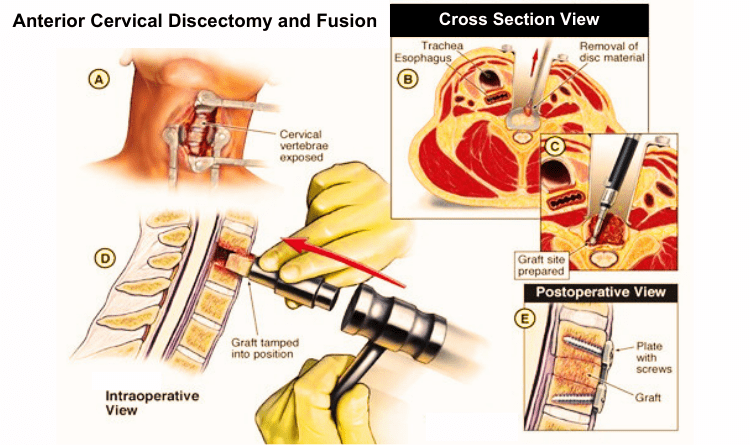
What is the Cost of Anterior Cervical Discectomy and Fusion?
The cost of anterior cervical discectomy and fusion surgery depends on multiple factors like the type of hospital, room opted, whether bone graft or artificial implant is used, surgeon's fees, and post-operative costs.
The surgery can cost anywhere from USD 4,800 to USD 6,000 in India. The patient has to stay in the hospital for about 2-3 days and outside the hospital for two weeks (for post-operative follow-ups).
The cost of anterior cervical discectomy in Turkey is about USD 10,000 to USD 13,000. The same surgery in Thailand costs around USD 9,000. The surgical excellence and use of cutting-edge technologies by the neurosurgeons in these countries justify the higher costs.
Final Words
Anterior cervical discectomy is a neurosurgical procedure to correct herniated cervical spine discs. The surgery is often combined with a fusion surgery to strengthen and stabilize the spine. With the advancements in the modern medical world, the risks associated with spinal surgeries have reduced to a great strength. So, if you or any of your known ones are suffering from a bulging disc that medicines and physical therapy cannot manage, it is best to go for the surgery.


